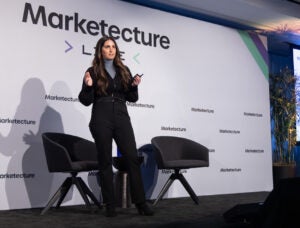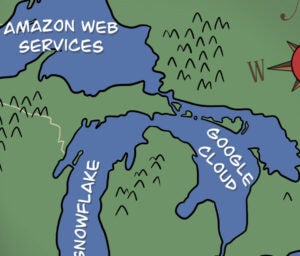 “Data-Driven Thinking” is written by members of the media community and contains fresh ideas on the digital revolution in media.
“Data-Driven Thinking” is written by members of the media community and contains fresh ideas on the digital revolution in media.
Today’s column is written by Chris Rooke, senior vice president of strategy and operations at Nativo.
There is no broad consensus among marketers for defining success in native advertising.
That’s not surprising since native is a significant departure from display. It requires a completely different type of creative execution, and aligns most closely to upper-funnel key performance indicators (KPIs). These engagement KPIs have been largely unachievable through interruptive advertising tactics, leaving marketers short on insights and light on delivery of actual consumer attention.
Publishers and brand marketers are beginning to mobilize around a new class of attention metrics. Time spent, for example, has risen in popularity among publishers as a barometer of the attention quality paid to content. Higher-quality attention on content, leading to more favorable brand consideration, is a standard brand marketers should demand. But the secret ingredient to measuring true engagement is a deeper set of metrics anchored to scroll activity: scroll initiation, scroll depth and scroll velocity.
When combined, time spent and scroll activity paint a clear picture of consumer engagement and provide a much more granular level of detail around true attention capture. But as with any emerging trend, count on growing pains to come.
Time On Content: Popular, But Not Enough
Deeper engagement with brand messaging, like more time spent on content, is a meaningful way for brands to connect with their consumer while also enhancing lower-funnel marketing tactics such as retargeting. How much time a consumer actively spends with brand content is a valuable signal on how to influence different stages of the consumer journey. More than half of digital publishers in Digital Context Next survey believe time on content could soon replace the standard ad impression. Some have already integrated time-based charge metrics into their pricing models. For example, Facebook incorporated time on content into its distribution algorithm, while the FT announced cost-per-hour inventory pricing.
But time on content must be married with a deeper set of metrics to tell the full consumer attention story. This is where scroll activity plays a pivotal role.
Scroll Activity: The Necessary Insight Layer
Today’s marketers have a hard time making sense of consumer interaction data from traditional display products. Performance reports combine deliberate and accidental “actions” into amorphous spreadsheets of fuzzy math that don’t illustrate engagement at all. Traditional practices obscure the ineffectiveness of digital investments and perpetuate a broken model of mediocrity.
Scroll activity, plus time on content and other mouse-tracking metrics, represent a new pinnacle of measurement. Considered together, they paint a picture of how and when consumers actually engage, as well as which creative elements actually catalyzed that engagement.
To be specific, scroll initiation is the point at which consumers take an authentic interest and start to dive deeper. If click-through rate (CTR) is the starting point of attention, scroll initiation is the starting point of engagement. It provides valuable direction to content optimization and future creation efforts. For example, a 73% scroll initiation is high enough to signal that the content piqued enough interest to motivate further engagement.
From there, scroll depth, also represented as a percentage, indicates how far consumers navigate through content, where they pause to delve deeper or where they lose interest and move on.
Finally, scroll velocity, which is a combination of down-scroll and up-scroll speed, is quantified in pixels per second and measures how quickly users travel through content. Scroll velocity faster than 70 pixels per second indicates users are probably skimming, but if velocity is slower, users are likely reading.
By combining these four metrics, marketers can quickly extrapolate the quantity and quality of attention captured and delivered. They can also identify which content elements drove deeper engagement – something legacy metrics can’t even begin to convey.
Looking Ahead
Today’s industry benchmarks are outdated and long overdue for recalibration to incorporate modern-day ad delivery and measurement capabilities. Armed with greater knowledge and insights into how attention drives behavior, marketers can better connect content to conversion and demand more return on their digital ad investments.
For example, today’s CTR benchmark for standard display is 0.10% to 0.20%, meaning one in every 1,000 impressions results in a click. Marketers should expect at least five times the clicks, given what’s been achievable with native placements over the past two years. Similarly, a benchmark refresh on time spent is long overdue. Current benchmarks for time spent on rich media ads range anywhere from eight to 14 seconds, but native executions can deliver upwards of 60 seconds of time spent on content.
Legacy impression and click-based metrics have enabled a range of suspect practices to plague the digital ad industry and hinder innovation. By using more appropriate metrics, however, brand marketers can drive a higher-quality standard from publishers and technology providers. As a result, we’ll see a better consumer experience and a more utilitarian medium that is positive for all stakeholders.
Follow Chris Rooke (@hchrisrooke), Nativo (@NativoPlatform) and AdExchanger (@adexchanger) on Twitter.












